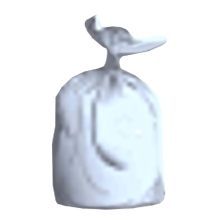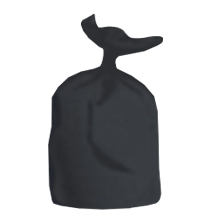Managing lifting equipment and reducing the risks from lifting operations.
If your business or organisation undertakes lifting operations or is involved in providing lifting equipment for others to use, you must manage and control the risks to avoid any injury or damage.
Where you undertake lifting operations involving lifting equipment you must:
- plan them properly
- using people who are sufficiently competent
- supervise them appropriately
- to ensure that they are carried out in a safe manner
GB legislation PUWER and LOLER provide the appropriate standards to meet in Guernsey).
What is lifting equipment?
Lifting equipment is any work equipment for lifting and lowering loads, and includes any accessories used in doing so (such as attachments to support, fix or anchor the equipment). Examples of lifting equipment include: overhead cranes and their supporting runways. patient hoists. motor vehicle lifts. (examples of lifting equipment)
Selecting the right equipment
- Both the Health and Safety at Work (General) (Guernsey) Ordinance, 1987 and the Safety of Employees (Miscellaneous Provisions) Ordinance, 1952 requires that lifting equipment must be of adequate strength and stability. This adds to the general obligations regarding the suitability of work equipment for the task it is to perform.
- Lifting equipment should be positioned or installed in such a way as to reduce the risk, as far as reasonably practicable, of the equipment or load striking a person, or of the load drifting, falling freely or being unintentionally released.
- Where people are being lifted, there are additional requirements to prevent people from being injured in / by the carrier, including more frequent thorough examinations.
Marking of lifting equipment
- All lifting equipment, including accessories, must be clearly marked to indicate their 'safe working loads' (SWL) - the maximum load the equipment can safely lift.
- Where the SWL of any equipment or accessory depends on its configuration, the information provided on the SWL must reflect all potential configurations (for example, where the hook of an engine hoist can be moved to different positions, the SWL should be shown for each position). In some cases, the information should be kept with the lifting machinery, eg the rated capacity indicator fitted to a crane, showing the operator the SWL for any of the crane's permitted lifting configurations.
- Accessories must also be marked to show any characteristics that might affect their safe use. This may include the weight of the parts, where their weight is significant.
- Where equipment is to be used to lift people, it should be marked to indicate the number of people that can be lifted in addition to the SWL of the equipment.
- Lifting equipment which is not designed for lifting people - but which might be used this way in error - must be clearly marked to indicate it should not be used to lift people.
Thorough examination
- Lifting equipment must be thoroughly examined in a number of situations, including:
- before first use (unless there is a valid Declaration of Conformity made less than 12 months earlier)
- where it depends on installation, or re-installation / assembly at another site
- where it is exposed to conditions causing deterioration, liable to result in danger
- Records of thorough examinations should be made and, where defects are identified, they should be reported to both the person using the equipment (and to any person from whom it has been hired or leased), and the relevant enforcing authority (HSE)
What is a lifting operation?
- A lifting operation is an operation concerned with the lifting and lowering of a load. A load is the item or items being lifted which could include a person or people. A lifting operation may be performed manually or using lifting equipment
- A lifting operation is 'an operation concerned with the lifting or lowering of a load'. A 'load' is the item or items being lifted, which includes a person or people.
- An employer must ensure that each lifting operation is planned by a 'competent person'. BS 7121 Code of Practice for Safe Use of Cranes, states that "the competent person for planning lifting operations is referred to as the appointed person".
Competent person for lifting operations (Appointed Person)
- In lifting operations, an appointed person is the person responsible for the execution and safety of a lifting operation. Although duties may be delegated to others, it is the appointed person who retains the responsibility of the operation.
- An appointed person may also be a crane supervisor or crane operator in addition to being an appointed person. The role is a very responsible one as the appointed person must have good working knowledge of lifting operations and safe working.
- An employer must ensure that each lifting operation is planned by a 'competent person'. BS 7121 Code of Practice for Safe Use of Cranes, states that "the competent person for planning lifting operations is referred to as the appointed person". This means that the competent person or appointed person are the same thing and may be used interchangeably - it just so happens that appointed person is the recognised title for this role and is widely used and recognised in the construction industry.
Planning, organising and carrying out lifting operations
- Lifting operations can often put people at great risk of injury, as well as incurring great costs when they go wrong. It is therefore important to properly resource, plan and organise lifting operations so they are carried out in a safe manner.
- Each of these elements requires a person or people with sufficient competence to be involved at each step. These people should have sufficient theoretical and practical knowledge of the work and equipment in question, as well as the requirements of the law, to be able to do this properly.
- For complex and high-risk operations, the planning and organisation should be extensive and meticulous.
Planning
- The planning of individual routine lifting operations may be the responsibility of those who carry them out (e.g. a slinger or crane operator). But for much more complex lifting operations (e.g. a tandem lift using multiple cranes), a written plan should be developed by a person with significant and specific competencies - adequate training, knowledge, skills and expertise - suitable for the level of the task.
- For straightforward, common lifting operations, a single initial generic plan may be all that is required (e.g. fork-lift trucks in a factory), which could be part of the normal risk assessment for the activity. However, from time to time it may be necessary to review the plan to make sure that nothing has changed and the plan remains valid. Routine lifting operations which are a little more complex may, depending on the circumstances, need to be planned each time the lifting operation is carried out.
- The plan for any lifting operation must address the foreseeable risks involved in the work and identify the appropriate resources (including people) necessary for safe completion of the job. Factors to include may be any or all of the following
- working under suspended loads
- visibility
- attaching / detaching and securing loads
- environment
- location
- overturning
- proximity hazards
- derating
- lifting people
- overload
- pre-use checking
- continuing integrity of the equipment
- The plan should set out clearly the actions involved at each step of the operation and identify the responsibilities of those involved. The degree of planning and complexity of the plan will vary and should be proportionate to the foreseeable risks involved in the work.
Strength and stability
- Lifting equipment must be of adequate strength for the proposed use. The assessment of this should recognise that there may be a combination of forces to which the lifting equipment, including the accessories, will be subjected.
- The lifting equipment used should provide an appropriate 'factor of safety' against all foreseeable types of failure.
- Where people are lifted, the factor of safety is often higher. Any lifting equipment selected should not be unduly susceptible to any of the foreseeable failure modes likely to arise in service, for example fracture, wear or fatigue.
Positioning and installation
- The position of mobile lifting equipment or the location of fixed installations can have a dramatic effect on the risks involved in a lifting operation. It is vital to take all practical steps to avoid people being struck by loads or the equipment itself during use. The equipment should also be positioned to minimise the need to lift over people. Measures should be taken to reduce the risk of load drift (eg spinning, swinging, etc); and of the load falling freely or being released unintentionally. Many different methods have been developed to prevent falling loads, including the use of multiple ropes or chains, hydraulic check valves and nets for palletised loads.
- Measures must be taken to ensure that people cannot fall down a shaft or hoistway. At access points to these areas, effective means to prevent access should be in place, such as gates, barriers or doors. Where access is required to enter the area, when a platform or car is present (eg a lift), the doors or gates should be interlocked to allow the gates to open only when the car is present.
- When positioning lifting equipment, care must be exercised to avoid hazards arising from proximity, for example: coming into contact with overhead power lines, buildings or structures; coming too close to trenches, excavations or other operations; and coming into contact with buried underground services, such as drains and sewers.
Working under suspended loads
- Where it can be avoided, loads should not be suspended over occupied areas. Where it cannot be avoided, the risks to people must be minimised by safe systems of work and appropriate precautions. Where loads are suspended for significant periods, the area below them should be classed as a danger zone, where access is restricted.
- Supervision of lifting operations.
- Supervision should be proportionate to the risk, taking account of the competencies and experience of those undertaking the lift. Many everyday lifting operations do not require direct supervision (eg experienced fork-lift operators undertaking routine lifts), although there may be circumstances where supervisory assistance may be required to manage risk (eg lifting an unusual load, crossing a public road etc). From time to time, employers may need to monitor the competence of workers undertaking lifting operations to ensure they continue to be carried out safely.
Further Guidance on planning, organising and undertaking lifting operations
- More detailed advice on the planning, organising and undertaking of lifting operations is provided in the L113: Safe use of lifting equipment (hse.gov.uk) Approved Code of Practice and guidance.
- Particular guidance is given on:
- competence of people planning lifting.
- suitability, including strength and stability, of lifting equipment.
- positioning of lifting equipment and visibility.
- working under suspended loads.
- attaching / detaching and securing loads.
- location, including access.
- environment of use, including operator protection, the effects of wind and mobility.
- overturning (regulation 8; ACOP para 258 onwards).
- proximity to other hazards, such as overhead power lines and buried services.
- derating.
- the lifting of people.
- preventing overload.
- pre-use checks.
- the continued integrity of lifting equipment.













